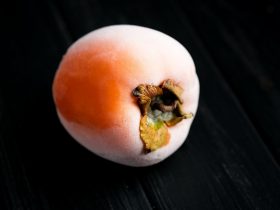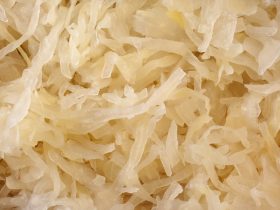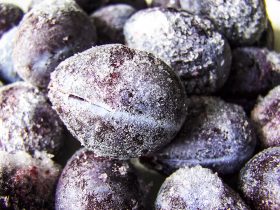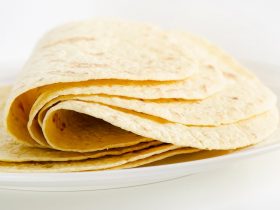Date palms, more commonly known as dates, are a sweet grape-like fruit common in the Eastern hemisphere with a multitude of different species. Owing to their popularity, it is not commonplace to see dates at a lower price, and so it is best to purchase in bulk when the opportunity arises.
In short – yes, dates can be frozen or placed in the fridge. According to independent studies conducted by Hashem Al-Sheikh, a Saudi Arabian microbiology professor at King Faisal university, most common species of dates last an approximate thirty days outside of the controlled temperatures of a fridge or freezer. In comparison, placing them in a standard low humidity environment of 35° – 40° F, such as that of a refrigerator, extend their shelf-life to six months, though desiccation may occur1.
Can Dates Be Frozen?
Yes. Dates, unlike most fruits, are relatively low in moisture while containing high amounts of sugar. This combination leads to an ideal candidate for long-term storage in a fridge, with minimal loss of texture and flavor so long as appropriate procedures are adhered to.
Required Equipment for Freezing
Freezing dates is far less labor intensive than other fruits or vegetables, with the only requirement being a resealable plastic pouch, a paring knife, and a freezer capable of near-zero degree or sub-zero degree temperatures.
Choosing an Appropriate Date to Freeze
According to an extensive article written by the U.S. Department of Agriculture, the ideal candidate of date for purchase, and, by extension, long term storage, is deemed “Grade A Classification” under the current USDA guidelines. This equates, roughly, to a date that is whole or pitted and not of the procedurally dried variety, as well as retains an intact cellular structure at the microscopic level2. Dates with an approximate moisture of seventy-five to seventy are at the optimal water-content for freezing.
Dates that present a white film or white spots are edible, as this is simply effused fructose from the slow drying of the fruit, and provide no change in the quality of the texture or taste of your produce.
Pitting Dates Before Freezing

It is recommended to remove the pits of the dates for two reasons; the first of which is that the pits will extend the amount of time it takes to thaw the fruit, and the second of which is ease of storage.
Using the aforementioned paring knife, slit the dates lengthwise from the side and carefully remove the pits from within.
Removing Excess Moisture
This step is unnecessary if the fruit was purchased in a sealed package.
Gently pat the dates dry with a cloth or tissue, or allow them to dry in the sun for several minutes so as to reduce any excess moisture present on the surfaces of the fruit, of which can catalyze enzymatic actions or bacterial development, further decreasing the shelf-life of the dates.
Storing the Dates Appropriately
In your resealable plastic pouch, place the dates in such a way that minimal air and moisture is present between the individual fruits, so as to extend the shelf-life as long as possible. Placing a single sheet of tissue beneath the fruit may prove useful, but it is not required. Freezing multiple batches will allow you to retrieve certain amounts of dates without exposing the rest of the fruit to changing temperatures and damaging refreezing.
Ensure the dates are stored in such a manner that they will not be pressed beneath anything else in your freezer, as this would rupture the delicate fruit. Take care as to not store dates in an open area next to aromatic compounds and plants, such as onions or a spice drawer, as they can absorb the scent and hints of flavor from these compounds3.
Thawing the Dates
Thawing dates requires no special procedure, simply remove them from the freezer and leave atop your counter for several minutes. Sugar crystals may be visible on the skin of the dates if they have been frozen for some time. This is entirely normal, though mild alterations to their texture may be tangible.
Re-freezing the Dates
In the event that you have removed too many dates from the freezer, simply replacing them inside will have little to no effect on their quality so long as the previously mentioned procedures have been followed. Note that dates with a higher moisture level than the recommended water content will experience cellular wall rupture at the microscopic level as the water crystallizes once more, further rupturing with each subsequent re-freezing.
Things to Keep in Mind
While dates are the ideal candidate for long term storage in a freezer or fridge, they are still subject to colonization from microorganisms and to the effects of their environment. Ensure that your dates are free of any fungus or mold before storing them, as well as ensure their water content is kept to an ideal level so as to reduce damage from low-temperature crystallization. Signs of spoilage in dates can be as obvious as discoloration of the skin, fermentation from yeast fungi, or even the scent of alcohol.
Dates, like all organic produce, are subject to oxidizing enzymes present in the fruit itself. This is unavoidable so long as the fruit is stored with excess air. In an ideal situation, vacuum-packing your dates and then freezing them at an approximate temperature of -18ºC or 0ºF would provide the absolute maximum shelf-life possible, lasting for over two years4.
References
1. Al-Sheikh, H. (2009). Date-Palm Fruit Spoilage and Seed-Borne Fungi of Saudi Arabia. Research Journal of Microbiology, 4(5), 208–213. https://doi.org/10.3923/jm.2009.208.213
2. USDA, Fruit and Vegetable quality division. (June, 1977). Dates and Date Products, https://www.ams.usda.gov/sites/default/files/media/Dates_Inspection_Instructions%5B1%5D.pdf
3. Dr. Marita Cantwell. (November, 2001). Properties and Recommended Conditions for the Long Term Storage of Fresh Fruits and Vegetables, University of California Davis Postharvest Center http://postharvest.ucdavis.edu/files/230191.pdf
4. Adel Kader, Jim Thompson, Kathi Silva, and Linda Harris, (Publication 2012, research date unknown). Storing Fresh Fruits and Vegetables, U.C. Davis Postharvest Center





Hi, I'm Dom
Dom Eats was started to help other people fall in love with food. While cooking can feel intimidating, it doesn't have to be.